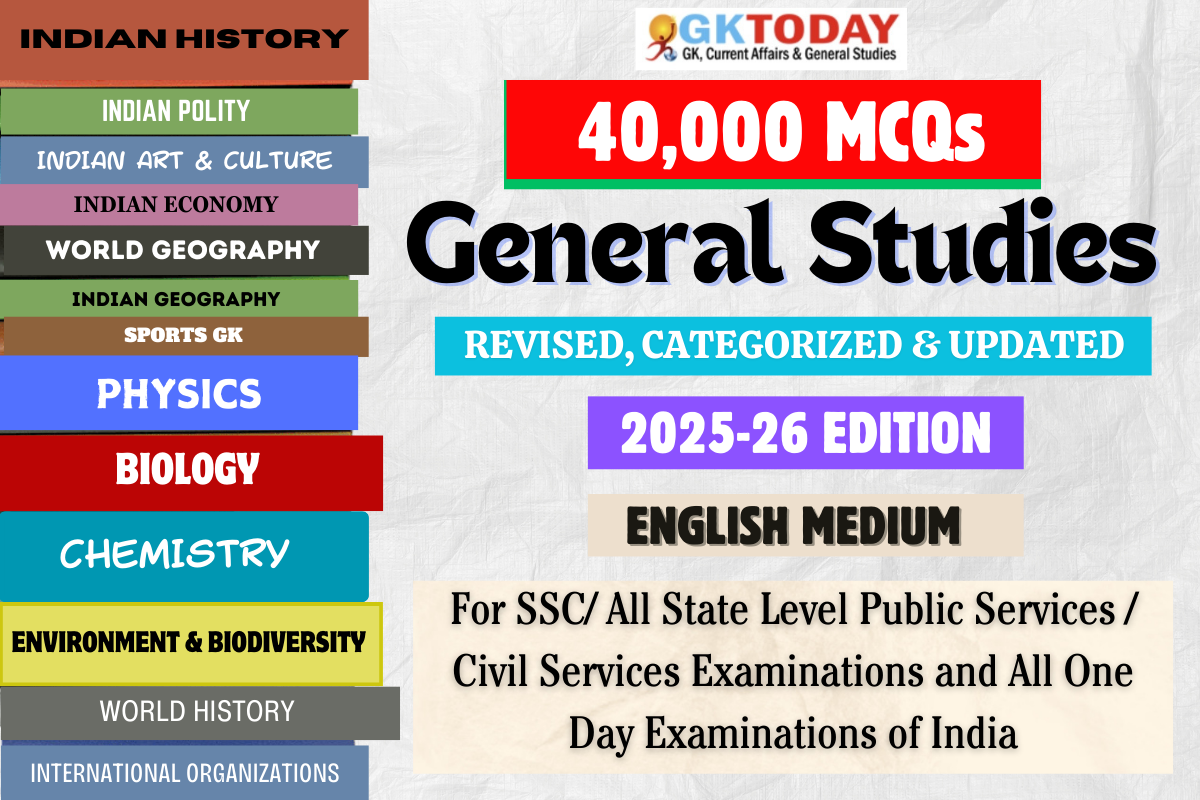Chemistry MCQs
Chemistry Objective (Multiple Choice) General Knowledge Questions & Answers for SSC-CGL, UPPSC, UPSC, NDA, CDS and UPSC Civil Services Prelims Examination.
11. Which of the following equation represents combination of Hydrogen gas with nitrogen to form ammonia?
[A] 2H2 + N –> NH3
[B] 2H + N3 –> NH3
[C] 3H2 + N2 –> 2NH3
[D] None of the above
Show Answer
Correct Answer: C [3H2 + N2 –> 2NH3]
Notes:
3H2 + N2 –> 2NH3 is the balance equation which represents combination of Hydrogen gas with nitrogen to form ammonia.
12. Which of the following acids is used in the Lead storage battery?
[A] Hydrochloric Acid
[B] Sulphuric Acid
[C] Nitric Acid
[D] Phosphoric Acid
Show Answer
Correct Answer: B [Sulphuric Acid ]
Notes:
Lead storage battery is an example of secondary battery. It consists of a lead anode and a grid of lead packed with lead dioxide (PbO2 ) as cathode. A 38% solution of sulphuric acid is used as an electrolyte.
13. Which of these polymers is used for controlled drug release in the body?
[A] PLA
[B] PHBV
[C] PGA
[D] PCL
Show Answer
Correct Answer: B [PHBV]
Notes:
PHBV is a copolymer of 3 – hydroxy butanoic acid, and (3 – hydroxypentanoic acid). It is used in controlled drug release in the body as the drug put in PHBV capsule is released after this polymer is degraded by enzymatic action.
14. Which metal is used in the Galvanization process?
[A] Tin
[B] Lead
[C] Zinc
[D] Copper
Show Answer
Correct Answer: C [Zinc]
Notes:
Zinc is used in galvanisation process. Galvanization is the process of applying a protective zinc coating to steel or iron, to prevent rusting.
15. Which is the most abundant metal in the Earth’s crust?
[A] Iron
[B] Aluminium
[C] Copper
[D] Silicon
Show Answer
Correct Answer: B [Aluminium]
Notes:
Aluminium is the most abundant metal in the Earth’s crust. It makes up about 8% of the Earth’s crust. Aluminium is the third most abundant element after oxygen and silicon.
16. How are the soaps that float in water prepared?
[A] By adding a gum called as rosin
[B] By beating tiny air bubbles
[C] By dissolving soap in ethanol
[D] None of the above
Show Answer
Correct Answer: B [By beating tiny air bubbles]
Notes:
Soaps that float in water are made by beating tiny air bubbles before their hardening. Transparent soaps are made by dissolving the soap in ethanol and then evaporating the excess solvent.
17. Which of the following fibres catches fire least?
[A] Rayon
[B] Terricot
[C] Cotton
[D] Nylon
Show Answer
Correct Answer: C [Cotton]
Notes:
Cotton is the fibre that is least prone to catch fire. There are many other such fibres but cotton tops the list here. Cotton is natural fibre which is polymer of glucose. cotton helps to prevent on catching fibre. That’s why our parents use cotton clothes in kitchen.
18. Which of the following gases is heavier than oxygen?
[A] Ammonia
[B] Methane
[C] Helium
[D] Carbon dioxide
Show Answer
Correct Answer: D [Carbon dioxide]
Notes:
Carbon dioxide has one carbon atom and two oxygen atoms, and a molecular weight of 44 grams per mole. The oxygen in the air is actually O2, or molecular oxygen, with a molecular weight of 32. Hence, carbon dioxide has a higher density, or is heavier than oxygen.
19. What is an endothermic reaction?
[A] Reaction in which heat is absorbed
[B] Reaction in which heat is released
[C] Reaction in which neither heat is released nor absorbed
[D] None of the above
Show Answer
Correct Answer: A [Reaction in which heat is absorbed]
Notes:
An endothermic process is any process which requires or absorbs energy from its surroundings, usually in the form of heat. It may be a chemical process, such as dissolving ammonium nitrate in water, or a physical process, such as the melting of ice cubes.
20. Most liquids that conduct electricity are solutions of acids, base and which of the following?
[A] Aluminium
[B] Copper
[C] Iron
[D] Salts
Show Answer
Correct Answer: D [Salts]
Notes:
Solutions that contain ions are good conductors of electricity, such as, acids, bases, salt water. Tap water, lemon juice and mercury is the best liquid conductor compare with others. Because of any solution to conduct, you need ions or free electrons.

